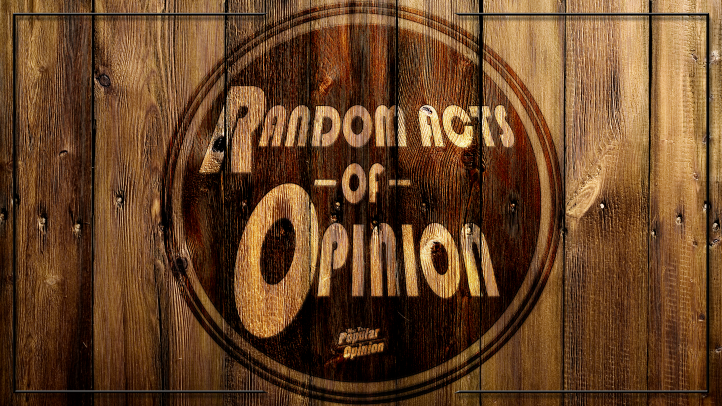

One of the things that complicates any discussion about Rebel Moon Part 2: The Scargiver as a singular movie experience is that it’s not really a film meant to be examined as an individual experience. Following the release of Rebel Moon Part 1: A Child of Fire in December of 2023, the 2024 film isn’t an extension of Rebel Moon mastermind Zack Snyder’s initial universe spawning entry. It is not a continuation of the general events of Part 1 in the form of a serialized entry that looks to grow and expand already established characters by placing them in a new situation. Instead, Scargiver is, not only practically but literally, the concluding acts of A Child of Fire. As has been well covered, Rebel Moon was attacked as a single production during a massive eight month period of principle photography producing what, in total, will be about six and a half hours of primary material. From that massive production was carved a pair of two hour, PG-13 rated films released as A Child of Fire and Scargiver, while the full six and a half hours worth of material will be released as two yet-to-be titled R-rated features in august of 2024. So as with the evaluation of the first film, any true assessment of the perks of being a Scargiver will be made more difficult by the fact that the two releases are separate films only by virtue of editing, and any true evaluation of the material can only be achieved by making the proper mental adjustments to regard them as a single, four hour piece.
Unfortunately, as we’ve come to understand all to well, in this world there is no upside to being reasonable. But fuck it; we’re rebels, aren’t we?
After an astonishingly brief Anthony Hopkins narrated recap, Scargiver picks up mere minutes after the conclusion of A Child of Fire. While Ed Skrein’s Atticus Noble recovers from the slight case of being dead he caught from Sophia Boutella’s Kora, our heroic troupe of Kora, Gunnar (Michael Huisman), Nemesis (Bae Doona), Tarek (Staz Nair) and General Titus (Djimon Honsou) return to the grain growing glens of Veldt for a little R&R just as news arrives that the enemy they thought had tucked tail and run was set to return with the quickness. While the villagers believe they return for the bounty of precious grain that instigated this adventure, Kora knows the truth; the enemy returns to collect her, Arthelais, who assassinated the beloved imperial princess under orders from her adopted father and current master of the universe, Lord Regent Belisarius (Fa Fee). With only five days until fate pulls up in low orbit, the heroes prepare the villagers for the fight of their lives, with Kora ready to put an end to Nobles political ambitions once and for all.
Being the product of a single production there is functionally no difference between A Child of Fire and Scargiver in regards to its production approach. Lighting, camera, scoring, directing and editing philosophy – every technical and creative aspect of the film is identical to that previous release. Anything you loved or hated about A Child of Fire is present in Scargiver including Snyder’s ridiculously, “controversial” use of slow motion and his choice of obscure vintage camera lenses – in this case a trio of very rare Japanese anamorphic glasses – to give the digitally captured images a texture that wouldn’t rely on post-processing effects like faux film grain. The movie also retains A Child of Fire’s often monologue heavy, theatrical style of drama which, while a groove can eventually be found, at times still rambles redundant. Make no mistake; under the hood Scargiver is exactly the same movie as A Child of Fire, warts and all.
But while the oddly steampunk machinery powering the material is unchanged there is a notable shift in the focus of the content. Scargiver immediately charts a course for higher intensity compared to A Child of Fire’s more languid pace. There’s a greater sense of purpose leading to a more clearly defined end-goal. The film also contains, in admittedly compressed form, some key elements missing from the first; a growing camaraderie among the heroes, a better sense of what motivates the villain, a sharing of reasons why the heroes are fighting and a climactic battle that eads to a substantive resolution while pointing the way towards further adventures in this universe. Most of this, if not all, can be attributed to the fact that the two films share a single overarching screenplay structure that was unfortunately affected by carving the original single screenplay into two pieces.
Cleaving the original screenplay in twain may have helped keep individual running times down but it also creates structural challenges to making each part feel like an individual film. While true neither installment is meant to be viewed as a distinct entity there does seem to have been an effort to provide some sense of dramatic arc to each individual piece. This can leave some in the audience with a disjointed sense of escalation as the arc waxes and wanes across the separate films. For instance, one of the most pernicious complaints about the first film is the lack of development among the various characters our heroine encounters. Though the film does provide some explanation why each of them is sought by the baddies, and each of their introductory scenes is designed to show us what kind of people they are and what they value, the film pays shallow lip service to what it is motivating their beef with the films imperial entity. Scargiver provides this material during a roundtable discussion about forty minutes in but that creates what appears to be an info dump early in the film that can feel out of place for the single film and might be seen as slowing down what should be the escalation of the action. If you were to stitch the two films together this would instead serve as a necessary period of decompression just before the finale kicks off. As it is, some only consider it as providing information the production was somehow unable to include the first time around.
If you take a large enough step back you can get a sense of what the total arc of the material was intended to be. Properly contextualized one can see how the pieces slot into place, including a difference between how you approach sharing the personal tragedies between characters just working a mercenary job and when they cross the line to fighting because they care about their cause. It would also provide better contrast between how they tell theirl stories with the manner in which Noble dismissively describes them. Without the need to make Noble’s defeat in A Child of Fire feel like a conclusion there would be a smoother and more understandable emotional deflation when the heroes return to Veldt feeling victorious only to immediately have that sense of victory ripped out from beneath them. Instead of needing to function as the beginning of a new film, this reveal would become a longer films mid-shift; that point in the film in which everything turns and the drama escalates. Unless you’re watching both releases back to back this sense of dramatic turn is going to be much more difficult to track across films. Watched as separate entities this leaves one film without a real conclusion and another without a real beginning. What may make Scargiver seem a more satisfying singular experience for some may be that while A Child of Fire is all set up, Scargiver is all pay off. And who doesn’t like a big finish?
Some will question why Snyder would make these compromises at all given that a streaming platform shouldn’t be beholden to the outside influences on length or rating that plagued his time with Warner Brothers. The simple answer is that was part of the deal to get the film financed. Snyder and the production studio he runs with wife and partner Deborah, The Stone Quarry, might be doing well enough financially but it’s doubtful they have $160M dollars stuffed in a sleep number mattress somewhere. While Snyder was undoubtedly willing to work with the studio, what specifically sweetened the deal around these shorter, PG-13 releases was Netflix letting Snyder run completely free in the production of his longer, R-rated cuts. Recently the director spoke of working with Netflix on, “shaping” the PG-13 versions of the films but explained that he was genuinely surprised that when it came to, “his” versions the studio opted not to offer any notes, or concerns/suggestions for changes. What this suggests is that while the studio was very involved with the editing of the lower rated films they were entirely hands off with the longer versions – a condition Snyder mentioned was unheard of in his career. Given the films were submitted to the MPAA it would seem the only condition was for the director to keep his versions limited to an R-rating. While that still seems somewhat arbitrary it does make sense if the studio ever considers either a theatrical release or licensing to other services.
This release strategy was driven almost exclusively by what Netflix’s analytics, not to mention the mountains of commentary from the filmgoing community, says about audiences relationship with films that run longer than two hours. Especially in the case of what are considered action films the audience has been pretty clear that they prefer more compact, fast paced roller coaster rides to sprawling, lengthy epics. And while Snyder, his co-writers Kurt Johnstadt and Shay Hatten, and editor Dody Dorn, could have cut the material to compact the storytelling into a smaller package, perhaps getting a single film down around three hours, the question is; would that allow Snyder enough time to create the kind of film experience he wanted to share? That’s the heart of the issue – getting the experience Snyder wanted to create for the audience into a form the all powerful algorithm says would have a greater chance of success. Remember; a film isn’t just it’s plot or story. it’s not just the dialog the characters speak or the production design. A film experience is the unique manner in which the material is presented to the audience. The esoteric elements a filmmaker adds to his approach are what make the film what it is and you can only cut around and compromise those things so much before it affects the experience the director wanted to create and the point of making the film at all is lost. You can still finish and release it, but it’s not really the film you started out to make. The studios desire to make the films as accessible to the widest audience possible was also the determining factor in producing these shorter films as PG-13 rather than R. This is nothing new in the film industry and has been an ongoing conversation for about 30 years, though this may be the first time a filmmaker has been so open about the process.
Without a doubt if you did not enjoy A Child of Fire as a film experience there is no redemption to be found in Scargiver as it is, for all intents and purposes, the same film. You may find it more amusing for the set pieces alone but all of the first films stylistic markers are on full display. But the purpose of the existence of Rebel Moon is to be a film shaped by Zack Snyder’s perspective and filled with his influences. While questionable if it were ever the case at this point in his career Zack Snyder is simply not interested in making movies for the general audience. He has a particular sensibility and a particular set of ideas he wants to explore and realizing those are his first and foremost concerns. As long as there are enough people in the world interested in seeing those visions and partaking in those experiences then he’ll have an opportunity to keep producing those films. Attempting to reach a compromise with the audience in this partnership with Netflix has had mixed results and it will remain to be seen what reaction the R-rated releases will get. Hopefully by that point more well reasoned intellects will have figured out a better way to approach discussing these films.
And if that doesn’t happen the, fuck it; we’re rebels, aren’t we?
Clever endings aren’t by bag
Laterz


I’m always glad that we have writers like you who being context to the table and not just focus on the piece.
I for one I’m a Snyder fan and thus know full well what I am getting from him which is why I love him in the first place.
To think people still don’t get that by now is baffling.
But what do you personally think of the movies?
As I said I’m extremely biased so of course I love them, especially part 1. I’m alone in that regard I know, liking A child of fire over Scargiver. For me part 1 did more and thus intrigued me more than part 2.
LikeLike
Snyder damaged his rep by taking this deal.
He allowed Netflix to butcher his films and now everyone but his closest fans believe he’s a total hack.
Unless his next projects shine, he may have ruined his career going forward.
LikeLike
That is a way to look at it.
LikeLike